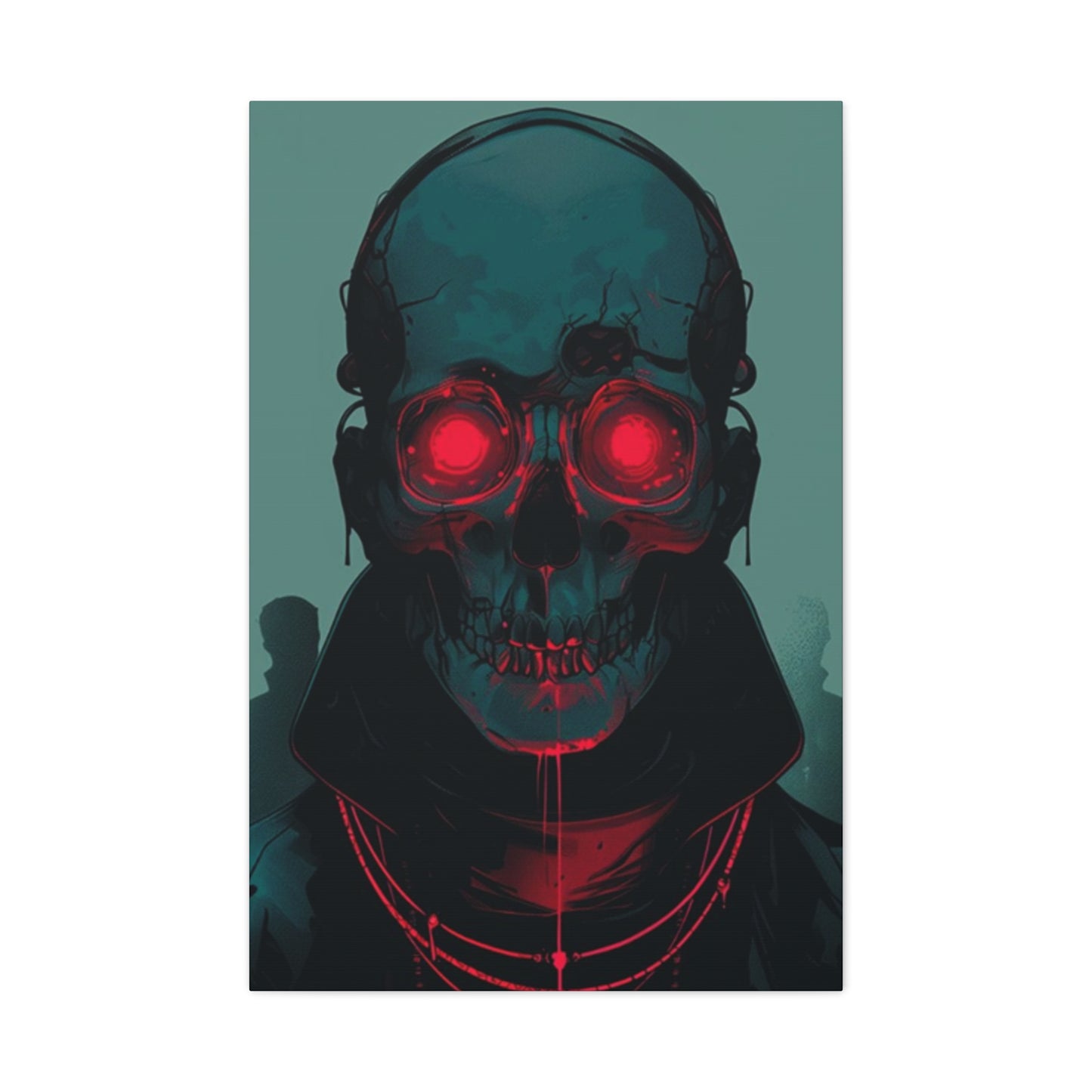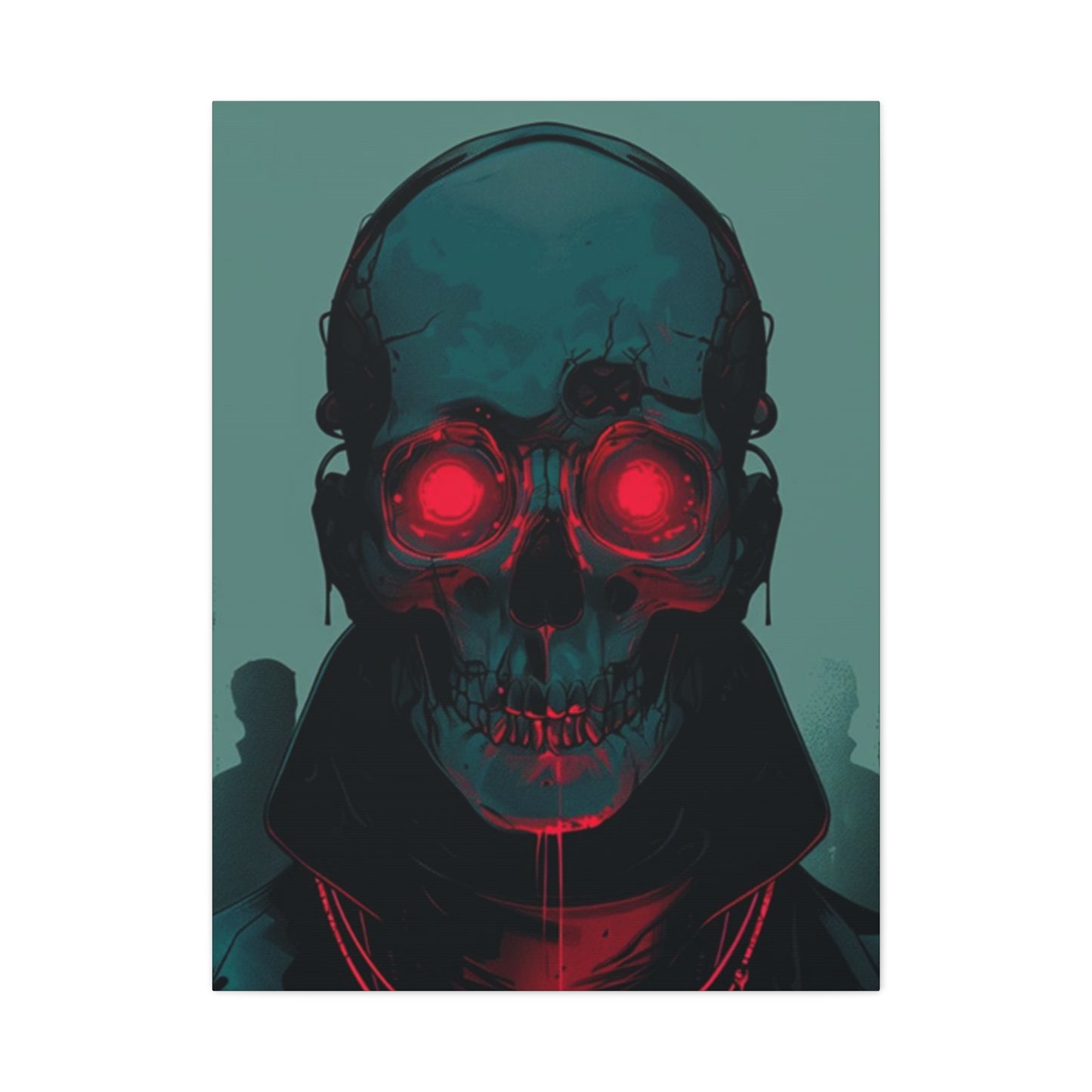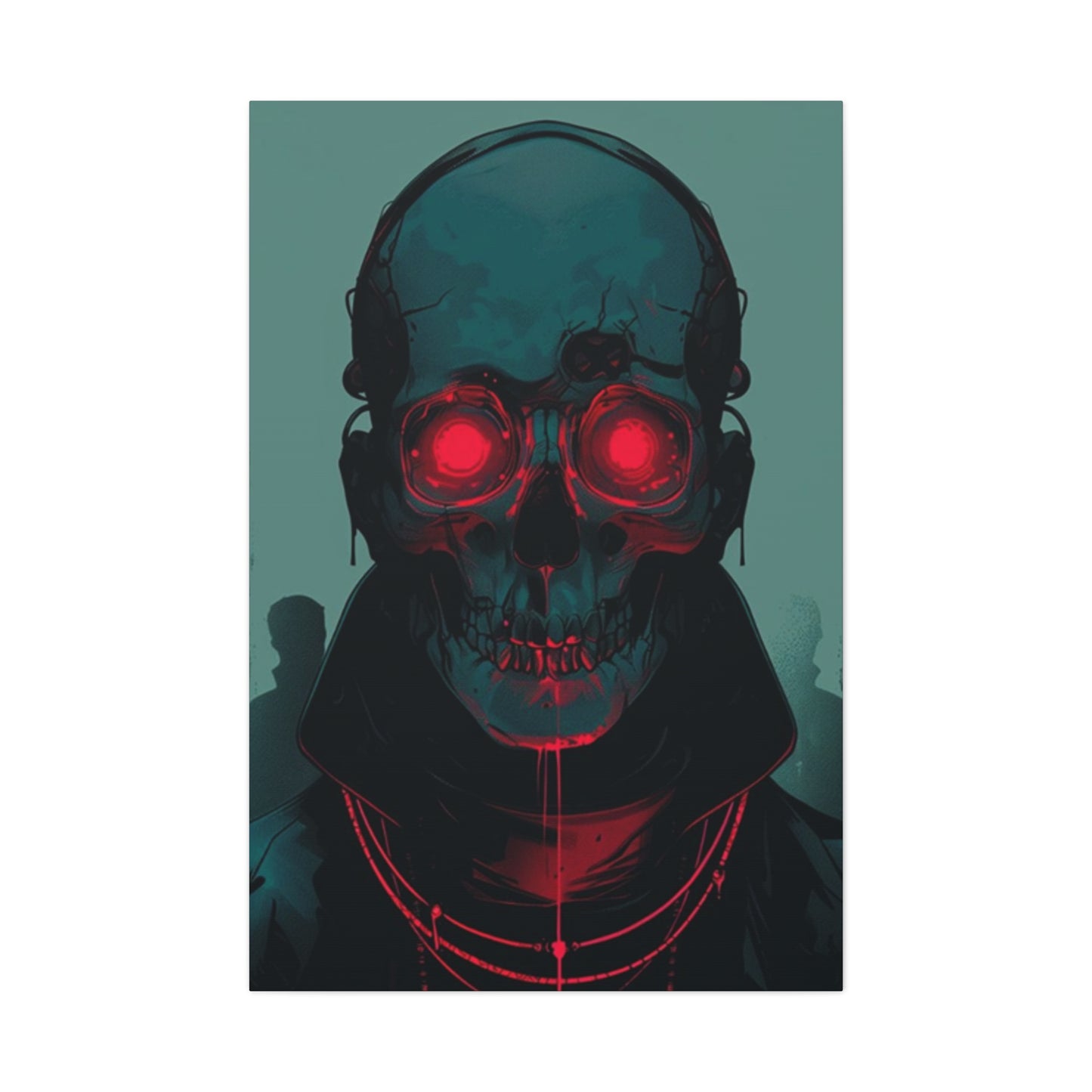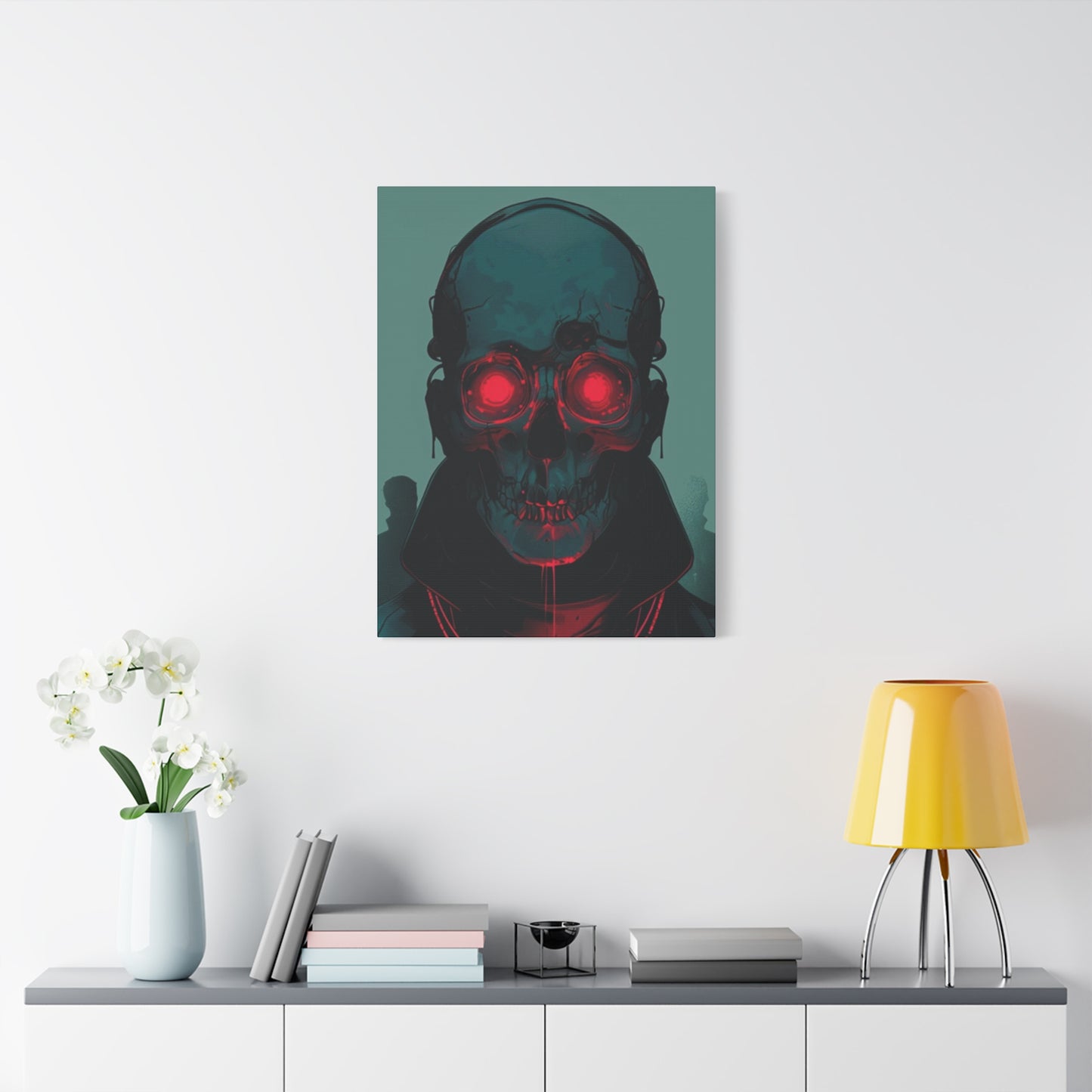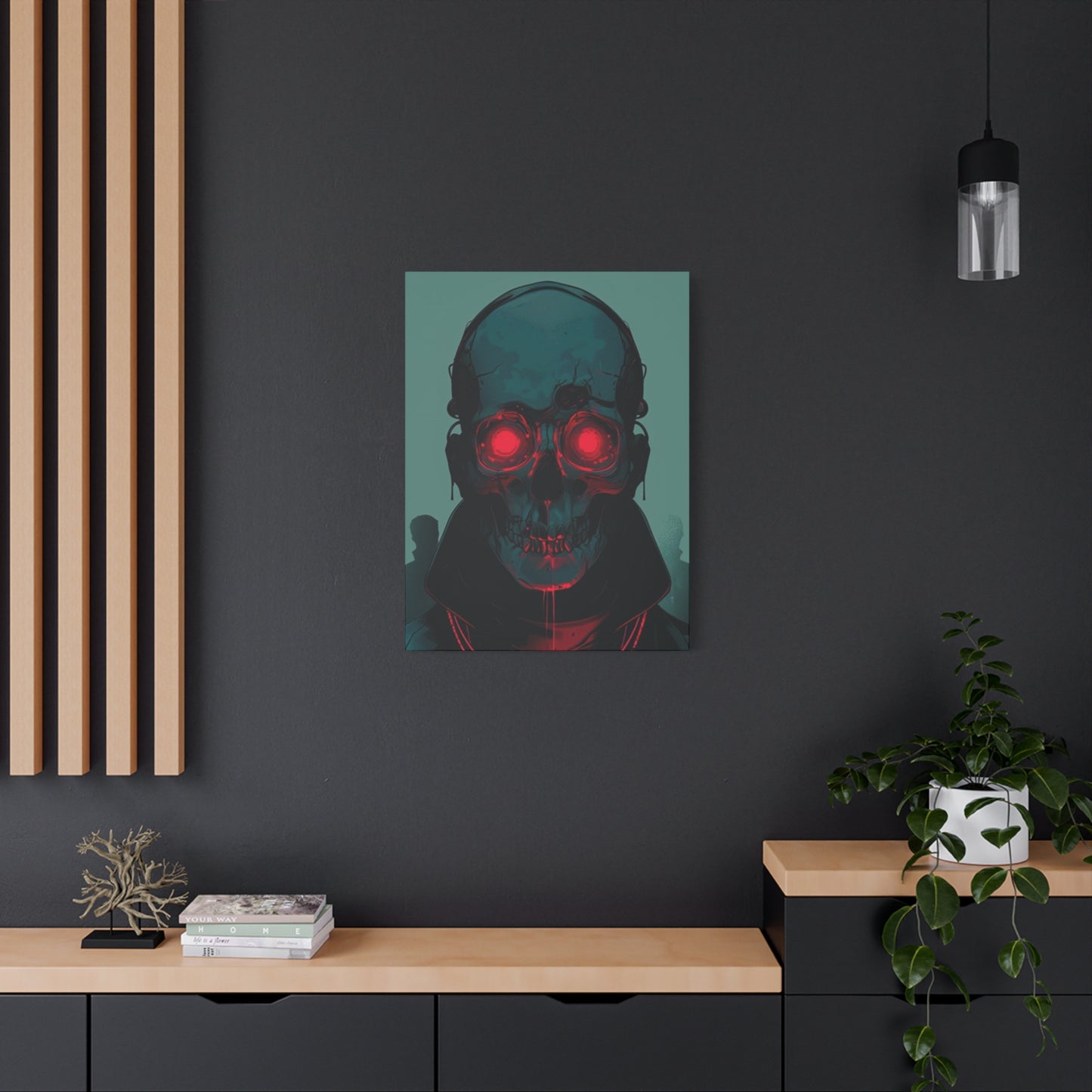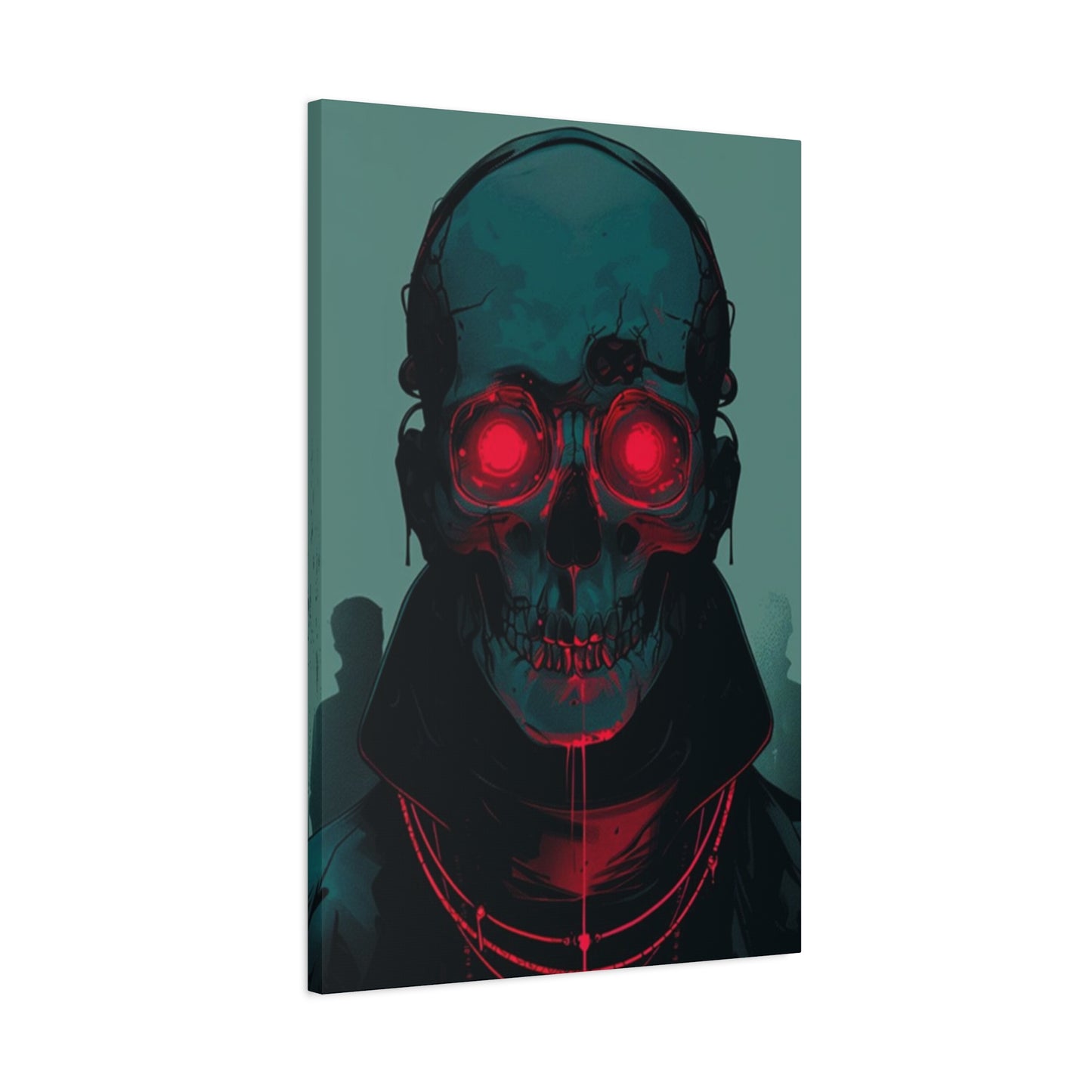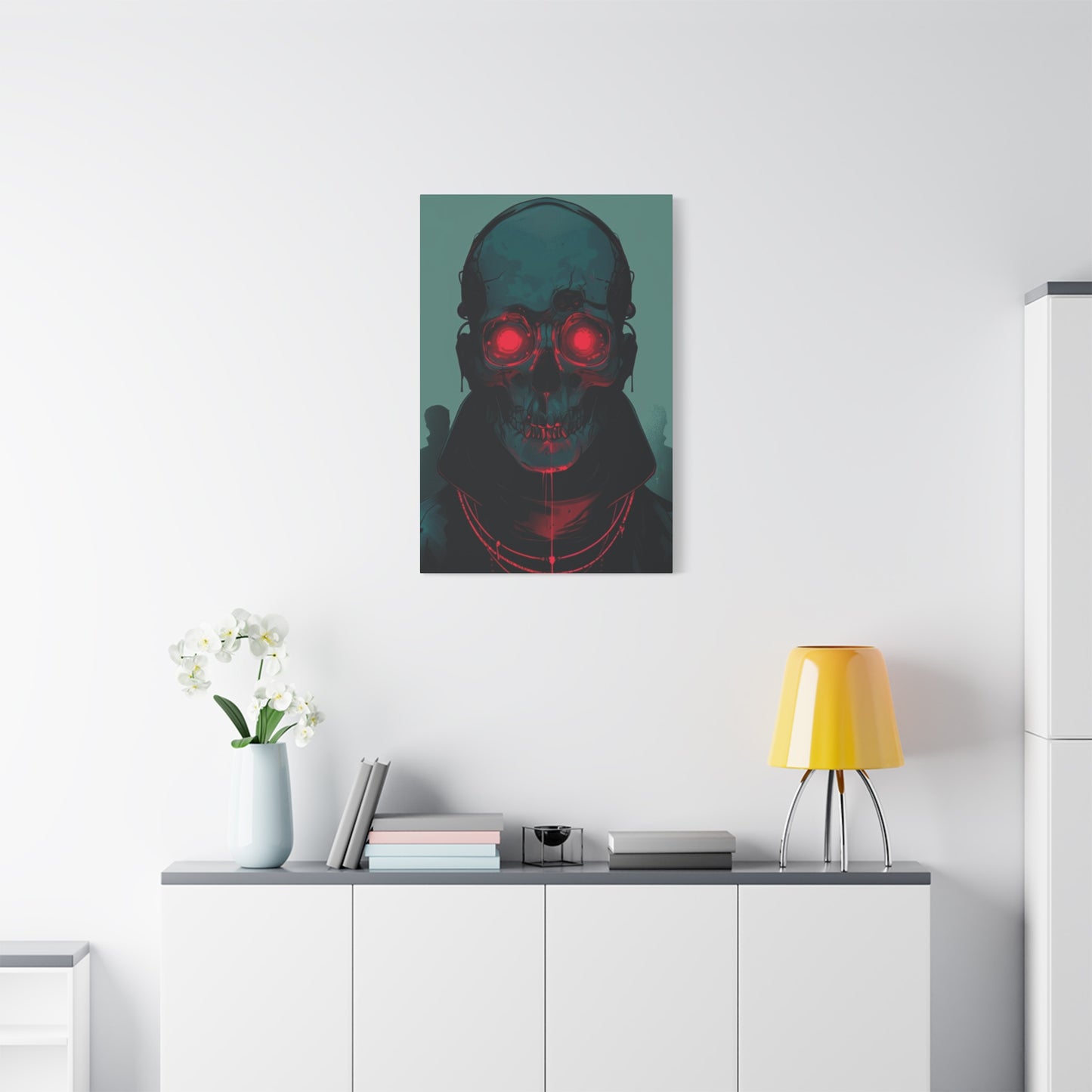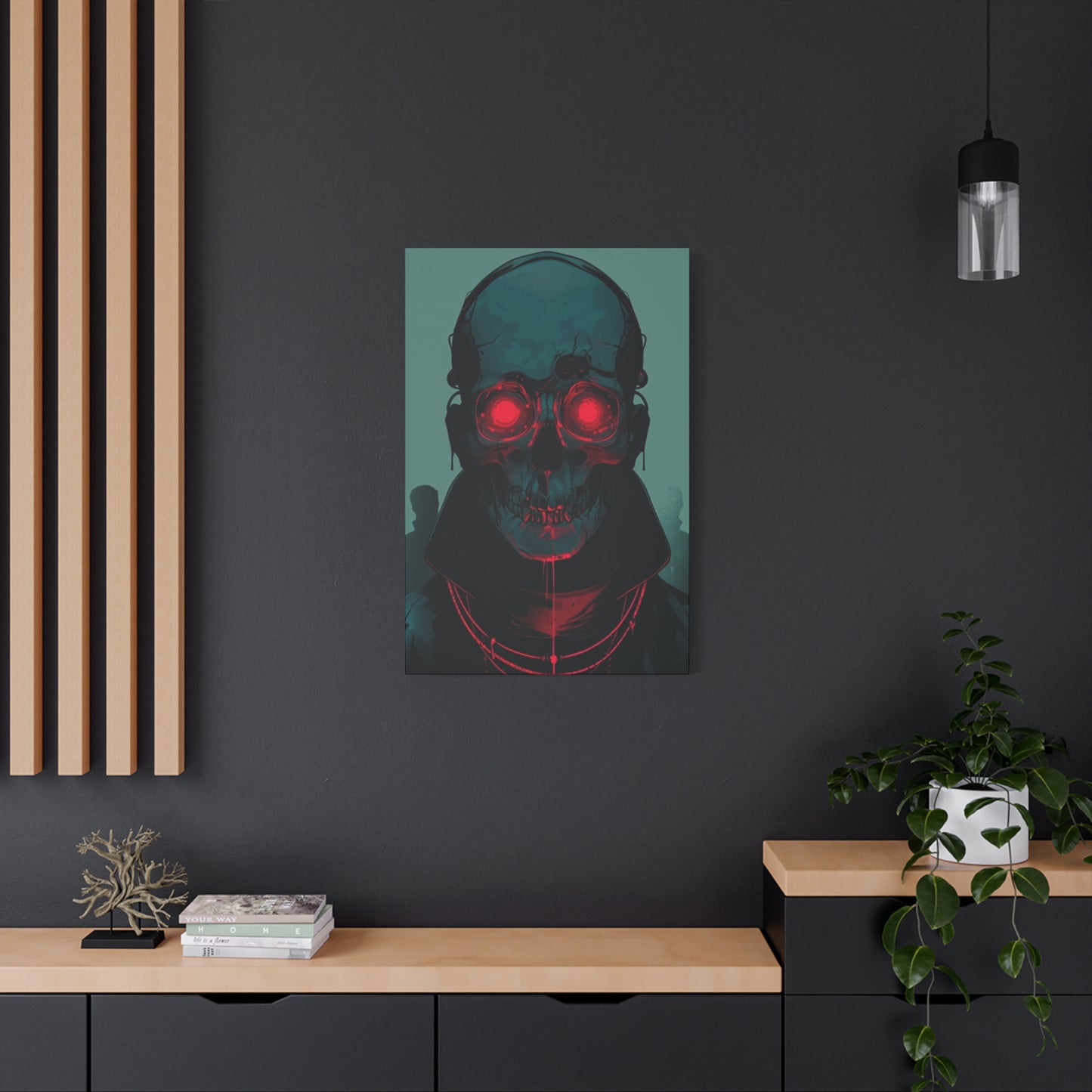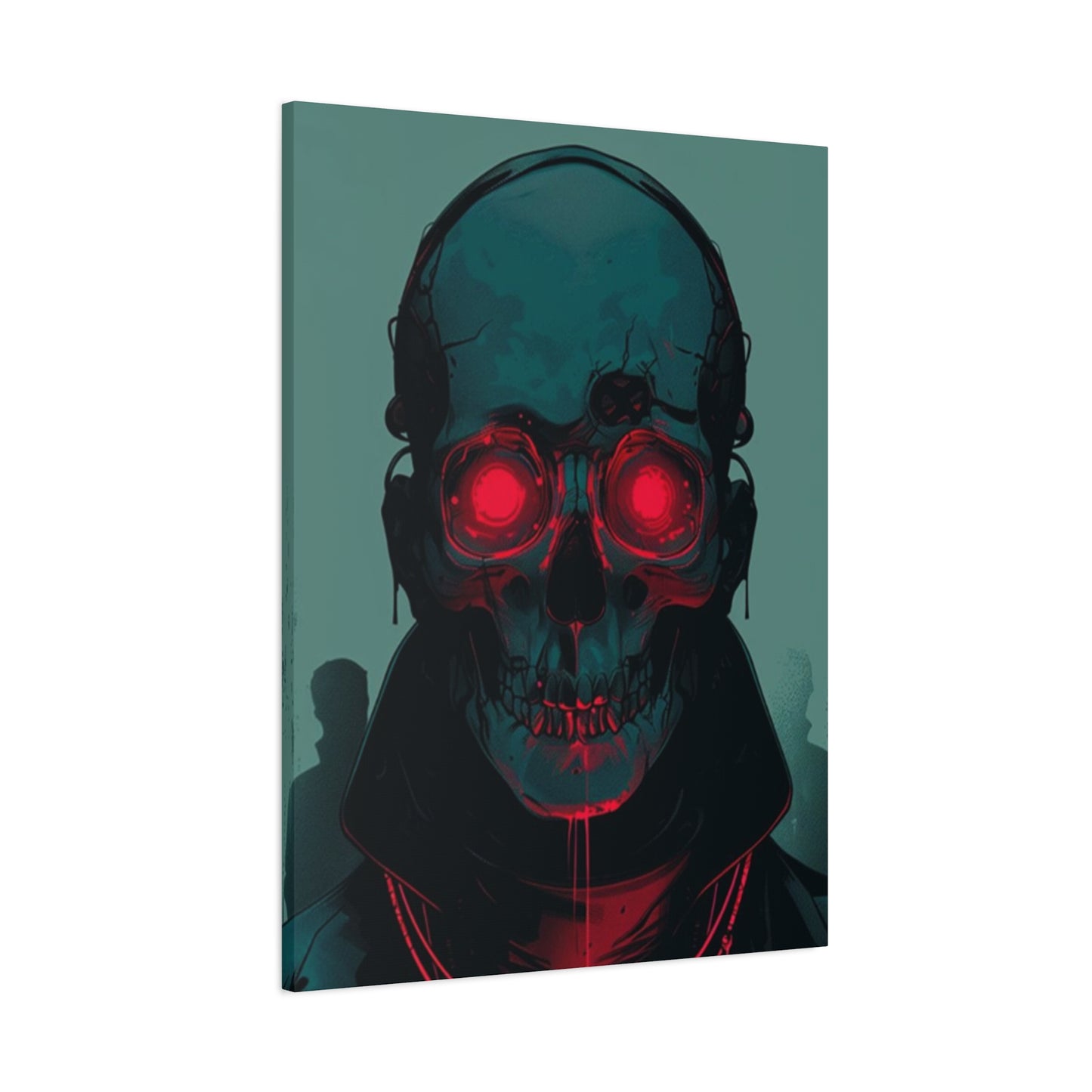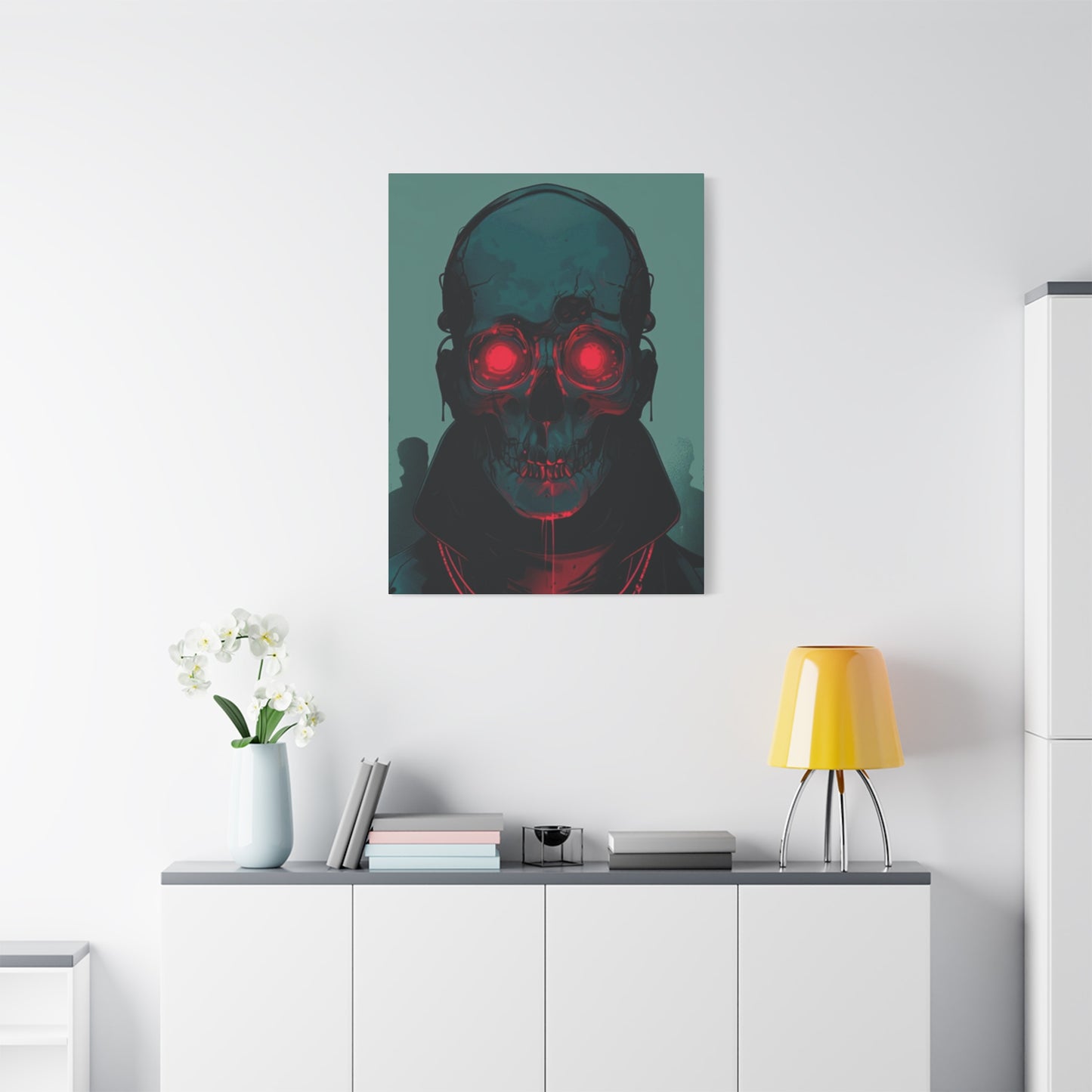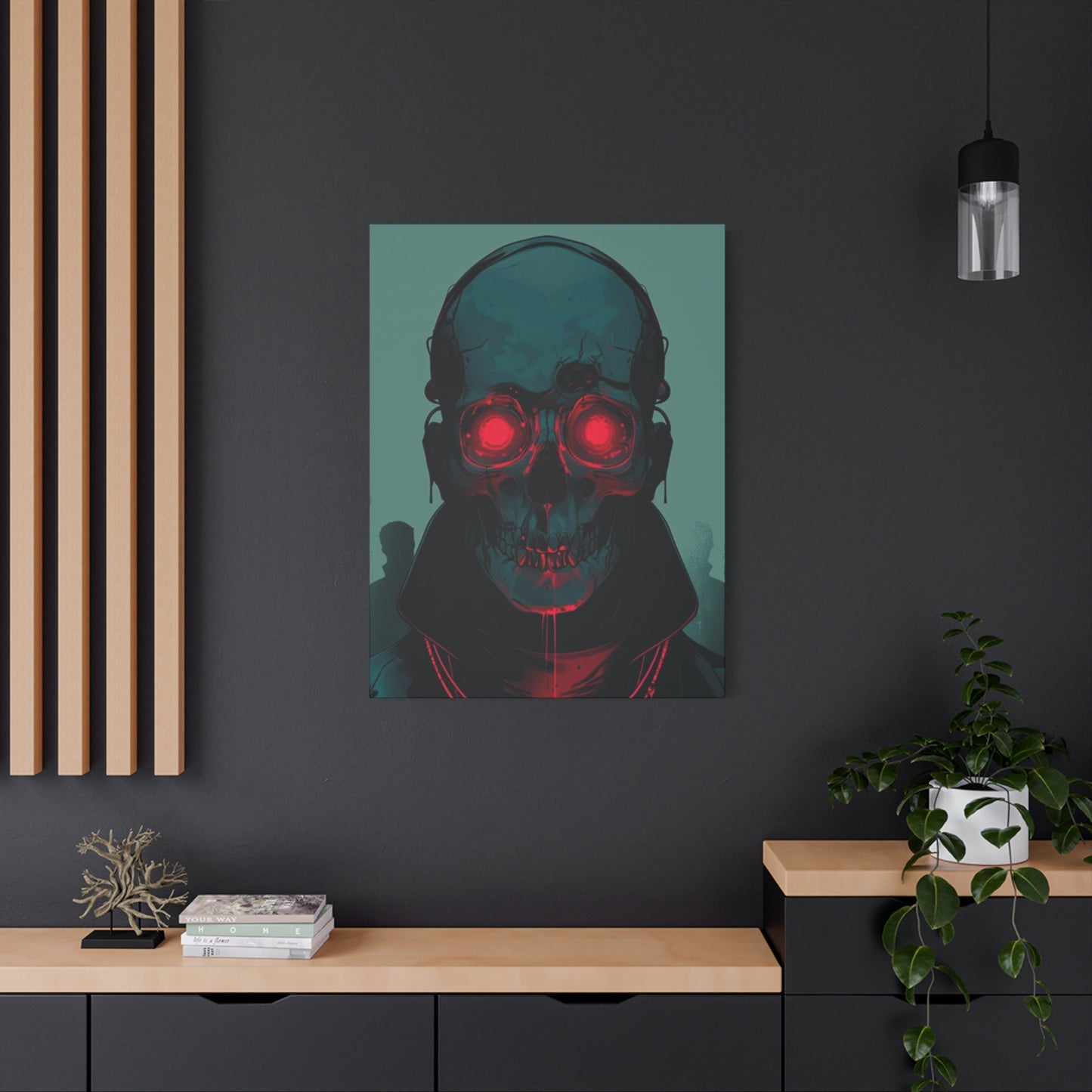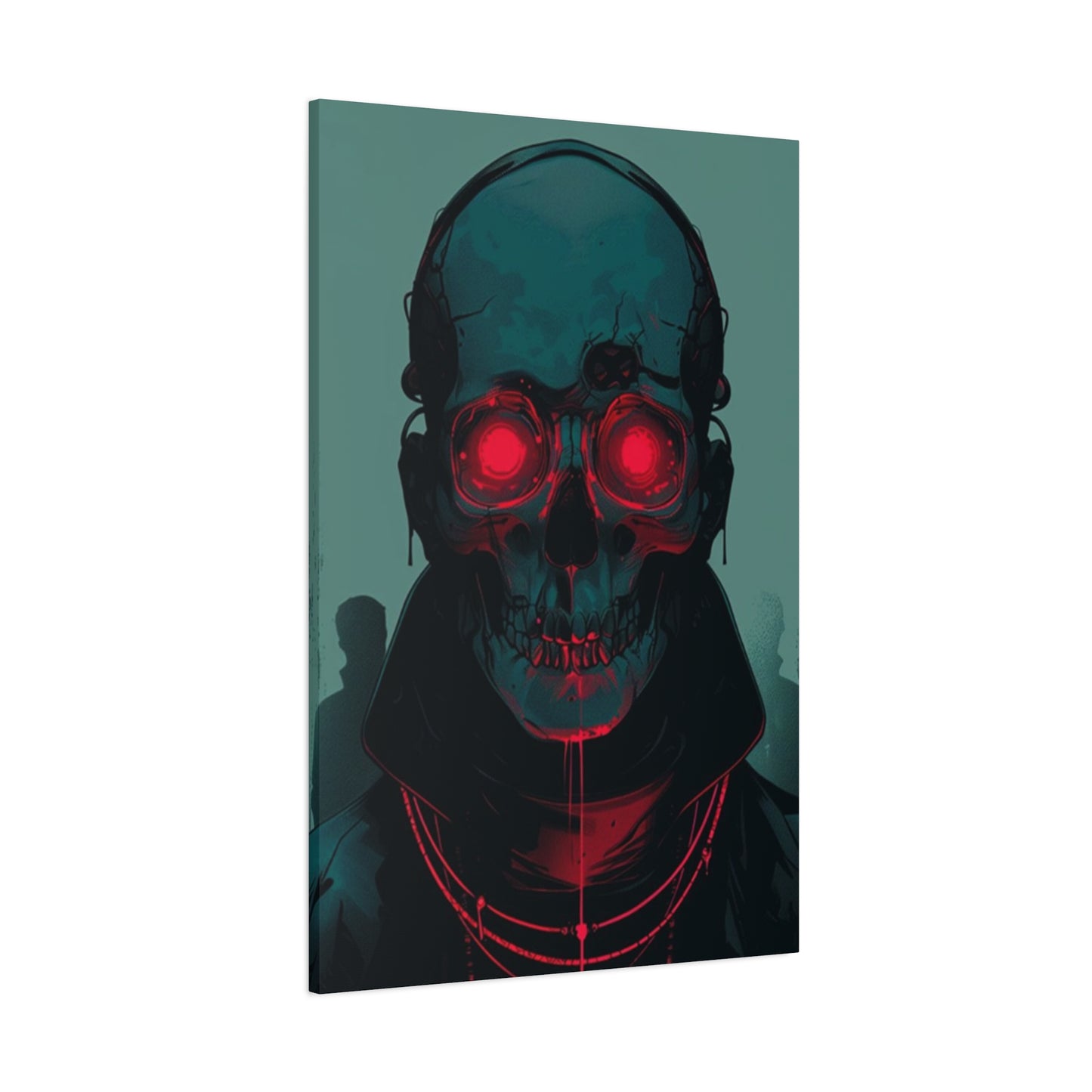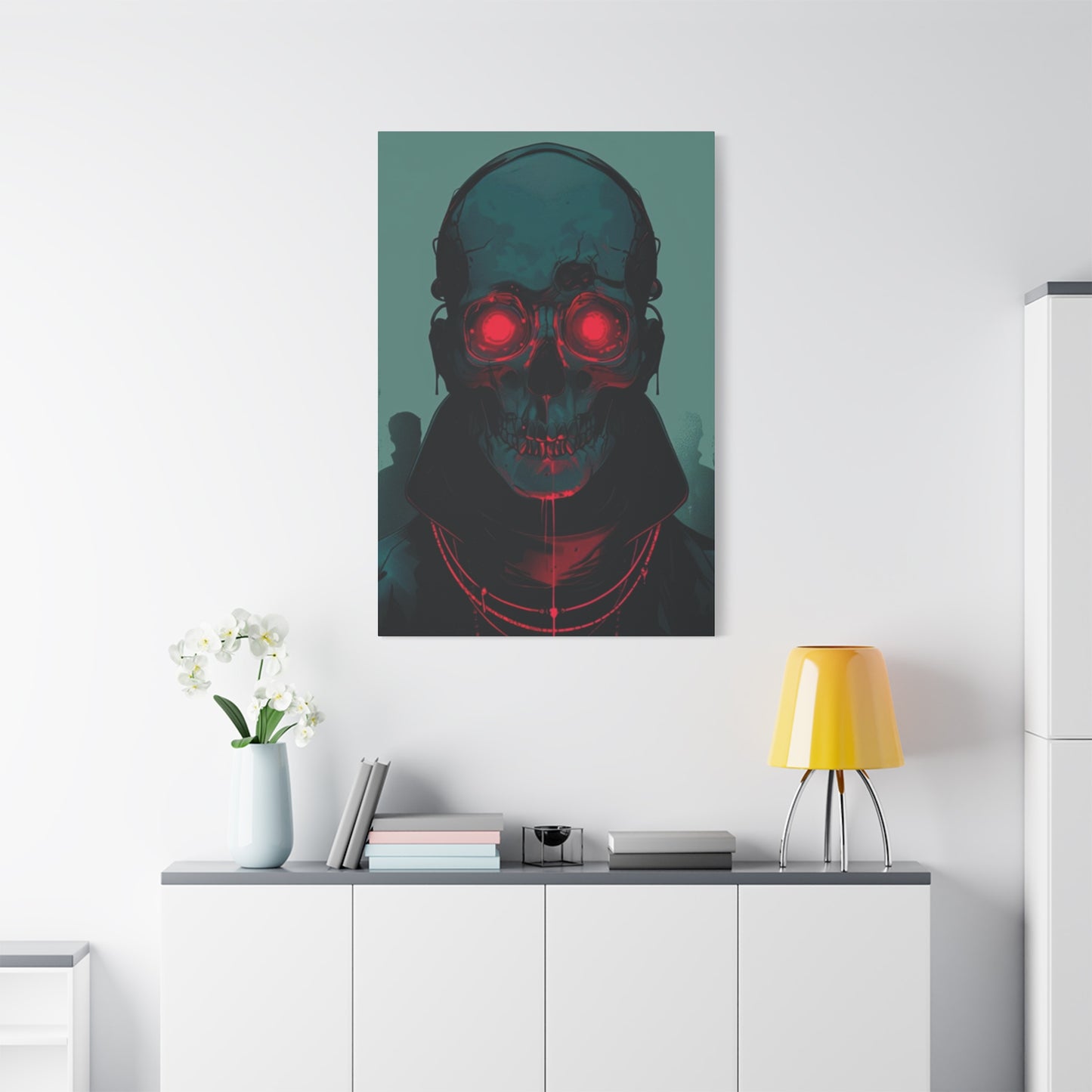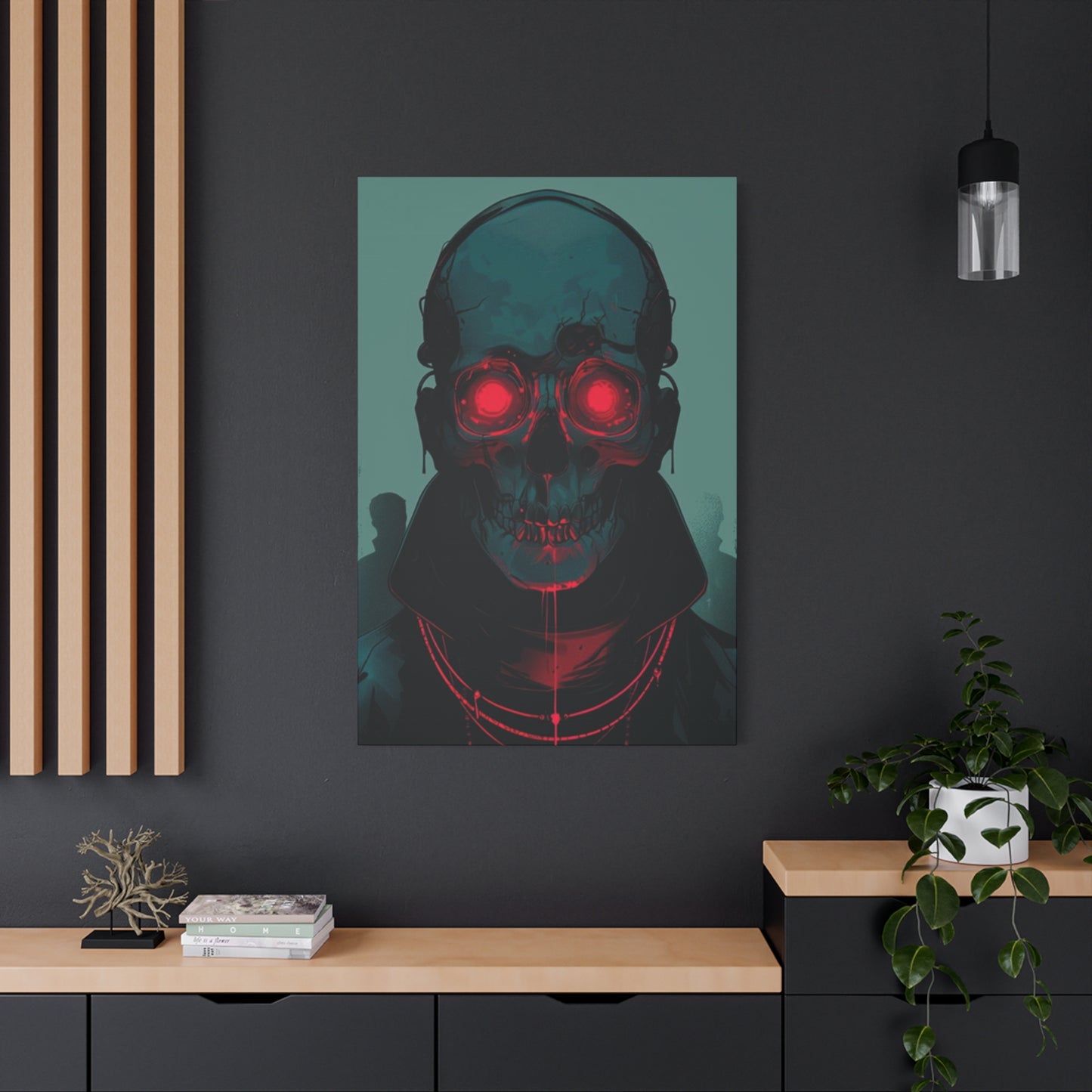Red Eye Skull Wall Art: Ultimate Guide to Fearless Decor for Bold Walls
The world of interior design has evolved significantly over the past decades, embracing diverse aesthetics that challenge conventional norms. One particularly striking trend that has captured the imagination of design enthusiasts and alternative art lovers is red-eyed rebel wall art featuring skulls. This distinctive form of artistic expression combines elements of gothic aesthetics, contemporary design sensibilities, and bold visual statements that demand attention from anyone entering a room. The appeal of red-eyed skull wall art extends far beyond simple shock value; it represents a deeper cultural phenomenon where individuals seek to express their personality, values, and unconventional taste through their living spaces.
Red-eyed rebel wall art has become increasingly popular among people who reject mainstream interior design conventions and embrace their darker, more daring aesthetic preferences. The visual impact of a skull rendered with piercing red eyes creates an immediate and undeniable presence that transforms any wall into a gallery of personal expression. Whether you're an artist, musician, creative professional, or simply someone who appreciates bold visual statements, this style of wall art speaks to a certain confidence and willingness to stand apart from the crowd. The rebellious nature of these designs makes them particularly appealing to younger demographics, though they have also found appreciation among mature individuals who value artistic integrity and non-conformity.
The phenomenon of red-eyed rebel wall art represents more than just decoration; it's a statement about individual identity and the courage required to maintain one's unique perspective in a world that often pressures conformity. These artworks function as visual anchors in spaces, creating focal points that immediately establish the tone and atmosphere of a room. For many people, having a red-eyed skull wall art piece displayed prominently signals that they are comfortable with unconventional choices and possess the confidence to embrace their true aesthetic preferences without apology. This psychological dimension adds layers of meaning to what might initially appear as simply striking imagery.
The evolution of red-eyed rebel wall art in contemporary design culture reflects broader shifts in how society views alternative aesthetics and subcultures. What was once considered exclusively countercultural or relegated to specific subcultural spaces has gradually entered mainstream consciousness as a legitimate design choice. This transition has allowed more people to experiment with bolder interior design choices without feeling they must completely align themselves with specific subcultures. The accessibility of high-quality red-eyed skull art prints and reproductions has democratized this aesthetic, making it available to diverse audiences regardless of geographic location or economic background.
Red-eyed rebel wall art appeals to individuals across different age groups, professional backgrounds, and lifestyle choices because it offers a visual language for expressing authentic personality without requiring complete subcultural identification. A lawyer, accountant, or corporate professional can display red-eyed skull artwork in their home office without necessarily embracing punk rock culture or identifying as part of any particular subculture. Instead, the artwork serves as a personal statement about aesthetic preferences and confidence in maintaining individuality. This expansion of red-eyed rebel wall art beyond its original subcultural contexts has contributed significantly to its mainstream appeal and has resulted in increasingly diverse interpretations and artistic approaches to skull imagery.
The technical execution of contemporary red-eyed rebel wall art reflects sophisticated understanding of visual composition, color theory, and psychological impact. Modern artists creating this type of work often receive formal training in fine arts and combine classical artistic techniques with contemporary subject matter. The result is artwork that operates simultaneously on multiple levels—as striking visual statements, as technically accomplished pieces demonstrating artistic mastery, and as meaningful explorations of themes like mortality, power, and authentic identity. This combination of high artistic standards with subject matter traditionally associated with rebellion and non-conformity has elevated red-eyed skull art from niche countercultural expression to a respected form of contemporary visual art.
The market for red-eyed rebel wall art has expanded dramatically as demand has increased and artists have responded by developing diverse stylistic approaches and interpretations of the core concept. Original paintings, prints, digital art, photography, and mixed media works all contribute to the diverse landscape of contemporary red-eyed skull artwork. This variety ensures that individuals seeking red-eyed rebel wall art can find pieces that align with their specific aesthetic preferences and artistic sensibilities, whether they prefer hyperrealistic renderings, abstract interpretations, or stylized designs. The expanding market has also made high-quality artwork more accessible to broader audiences, as the competition among artists and producers has driven innovation in production methods and distribution channels.
Exploring Dark Style: Skull with Red Eyes as Contemporary Art
The dark style aesthetic represented by skulls with red eyes encompasses a rich artistic tradition that draws from multiple creative disciplines and historical influences. This particular artistic approach combines elements of traditional memento mori symbolism with modern graphic design techniques, creating works that function simultaneously as meaningful art and striking visual statements. Understanding the artistic foundations of dark style skull art helps illuminate why these pieces resonate so powerfully with contemporary audiences and what makes them effective as both standalone artworks and elements within larger interior design schemes.
Dark style skull with red eyes represents an evolution of gothic and alternative aesthetics that have existed in artistic traditions for centuries. The skull itself carries profound symbolic weight across multiple cultures, representing mortality, transformation, danger, and the ultimate equality that death brings to all living beings. By rendering these traditionally somber symbols with piercing red eyes, contemporary artists add layers of intensity and psychological complexity to the work. The red coloration immediately evokes strong emotional responses, triggering associations with danger, passion, power, and transgression. This combination of traditional symbolism with modern artistic interpretation creates a dynamic tension that makes these artworks particularly compelling to viewers.
The technical execution of dark style skull with red eyes art requires significant artistic skill and understanding of visual composition. Creating an effective piece in this style demands that artists master several key elements simultaneously. They must achieve proper anatomical accuracy in rendering the skull structure, ensuring that the bones are depicted with sufficient detail and realism to create credibility. Simultaneously, they must develop a distinctive visual language that distinguishes their work from countless other skull artworks, perhaps through unique approaches to shading, perspective, or symbolic elements incorporated into the composition. The red eyes represent the focal point toward which all compositional elements direct the viewer's attention, requiring careful consideration of placement, intensity, and contrast with surrounding elements.
What distinguishes truly exceptional dark style skull with red eyes work from merely competent examples is the artist's ability to convey emotional depth and intentionality through visual means. The most compelling pieces in this category communicate something meaningful about human existence, artistic philosophy, or cultural commentary. Some artists use the skull motif to explore themes of mortality and memento mori, while others employ it to make statements about power, rebellion, or the darker aspects of human nature. The red eyes can be interpreted as representing awakening, enlightenment, warning, passion, or countless other concepts depending on the context and the artist's intention. This symbolic flexibility makes dark style skull with red eyes art particularly versatile for different personal interpretations and aesthetic contexts.
The compositional choices artists make when creating dark style skull artwork significantly influence how viewers perceive and respond to the finished piece. Some artists choose to isolate the skull, presenting it starkly against minimal backgrounds to maximize focus on the subject itself. Others incorporate surrounding elements that provide context or enhance the visual narrative, such as flowing fabric, natural elements, geometric patterns, or symbolic imagery related to various spiritual or philosophical traditions. The decision to render the skull realistically or abstractly, to include or exclude the lower jaw, and to depict the red eyes in photorealistic detail or more stylized interpretations all contribute to the overall impact and interpretation of the work. These technical decisions represent artistic choices that reflect each creator's unique vision and understanding of how to most effectively communicate their artistic concepts.
Contemporary dark style artists often draw inspiration from historical art movements including surrealism, expressionism, and conceptual art, while also engaging with contemporary digital art techniques and approaches. The fusion of historical artistic traditions with modern technological tools has expanded the possibilities for creating dark style skull artwork. Digital artists can experiment with compositions, color schemes, and effects that would be impractical or impossible using traditional media alone. Similarly, traditional painters and sculptors working in dark style continue to produce compelling work that demonstrates the enduring power of classical artistic approaches. The resulting diversity of approaches within dark style skull art ensures that the category remains vital and innovative while maintaining connections to historical artistic traditions.
The symbolism embedded within dark style skull with red eyes artwork often reflects contemporary anxieties and preoccupations alongside more timeless human concerns about mortality and meaning. Many contemporary artists use skull imagery to comment on themes like environmental destruction, social violence, psychological trauma, or the sense of alienation and disconnection prevalent in modern technological society. The red eyes can suggest technological surveillance, artificial intelligence, or the intensity of human emotion in contemporary contexts. Other artists employ skull imagery in more traditionally spiritual or philosophical contexts, using the motif to explore timeless questions about the nature of existence, consciousness, and the purpose of human life. This thematic diversity ensures that dark style skull art appeals to viewers with varied intellectual, emotional, and spiritual concerns.
Discovering Fearless Decor: Red Eye Skull for Bold Wall Transformations
Fearless decor has emerged as a significant design philosophy for individuals who refuse to conform to conservative interior design standards and who view their living spaces as opportunities for genuine self-expression. Red eye skull pieces embody this fearless approach to home decoration by immediately establishing that the person inhabiting the space is comfortable with unconventional choices and possesses aesthetic confidence. The philosophy underlying fearless decor suggests that walls should reflect the authentic personality and values of those living in the space rather than serving as blank, neutral backdrops. This approach to interior design has particular appeal for creative professionals, artists, musicians, and others whose work or lifestyle involves challenging conventional thinking.
Red eye skull as a centerpiece of fearless decor transforms the energy of any space it inhabits. Where traditional interior design often aims for subtle sophistication or timeless elegance, fearless decor embraces boldness, visual impact, and the kind of immediate emotional resonance that makes spaces memorable. A well-executed red eye skull artwork can serve as the anchor point around which an entire room's aesthetic revolves. Other elements can then be arranged to complement or contrast with this bold centerpiece, creating a cohesive interior design scheme that feels intentional and personally meaningful. The presence of red eye skull artwork immediately communicates to visitors that they are entering the space of someone with strong aesthetic convictions and the confidence to express them unapologetically.
The psychological impact of fearless decor incorporating red eye skull elements extends beyond mere visual interest. Research in environmental psychology demonstrates that our surroundings profoundly influence our mood, productivity, and sense of wellbeing. For people who deeply connect with darker or more alternative aesthetics, surrounding themselves with conventional decor that contradicts their authentic preferences can create subtle but persistent cognitive dissonance. Conversely, surrounding oneself with artwork and design elements that genuinely resonate with one's values and aesthetic preferences creates an environment that reinforces a positive sense of self and authenticity. A fearless decor approach featuring red eye skull art allows individuals to create spaces that feel genuinely theirs rather than spaces designed to meet external expectations or conventional standards.
The versatility of red eye skull artwork within fearless decor schemes is remarkable, given the seemingly specific nature of the imagery. These pieces can anchor different aesthetic directions depending on their specific style, surrounding elements, and compositional choices. A hyperrealistic red eye skull rendered with photographic detail creates a very different visual and psychological impact than a more stylized or abstracted interpretation of the same subject matter. Similarly, a red eye skull incorporated into a larger composition with additional symbolic elements sends different messages than an isolated skull head staring directly forward. This versatility allows fearless decor enthusiasts to incorporate red eye skull artwork into diverse personal aesthetic schemes, from purely gothic or alternative styles to more eclectic approaches that blend darker elements with other contrasting design choices.
Fearless decor using red eye skull imagery can coexist harmoniously with various other design elements and aesthetic traditions. Some individuals create spaces that are predominantly dark and gothic, filling rooms with black walls, deep burgundy accents, ornamental elements, and multiple skull-related artworks creating a cohesive gothic aesthetic. Others adopt a more eclectic approach, combining red eye skull art with bright, cheerful elements, colorful contemporary furniture, and diverse artwork styles to create spaces that reflect the complexity and multiplicity of their personalities. The flexibility of fearless decor as a design philosophy permits this range of approaches, united by the shared commitment to authentic self-expression and confidence in unconventional aesthetic choices rather than adherence to any specific visual formula.
The practical considerations of implementing fearless decor using red eye skull artwork involve thoughtful decisions about size, placement, framing, and integration with existing design elements. The dimensions of the artwork relative to wall space and room size significantly influence its visual impact and psychological presence. A large-scale red eye skull print positioned prominently as the focal point of a room creates different aesthetic effects than the same image rendered in smaller scale as part of a diverse gallery wall arrangement. The matting and framing choices impact how the artwork integrates with surrounding decor, with professional-quality framing that complements the artwork's aesthetic generally producing superior visual results compared to casual hanging without frames. The wall color behind the artwork influences how effectively the piece commands attention, with certain color combinations creating maximum contrast and visual impact while others create more subtle or integrated effects.
Fearless decor with red eye skull art often functions as a catalyst for broader interior design discussions and decisions. Once an individual commits to displaying bold, unconventional artwork as a room's focal point, this decision typically influences numerous other design choices. Colors selected for walls or furniture may be chosen to complement or contrast with the artwork's palette. Additional artwork might be selected to coordinate with or provide visual counterpoint to the red eye skull piece. The overall tone and atmosphere of the space becomes more intentional and thoughtful as the fearless aesthetic choice ripples through the entire design scheme. For many people, the introduction of bold red eye skull artwork catalyzes a more comprehensive exploration and expression of their authentic aesthetic preferences throughout their living space.
The Gothic Edge: Understanding Bold Walls and Skull Art Aesthetics
Gothic aesthetics have maintained surprising durability in contemporary design, evolving continuously while maintaining core visual and conceptual elements that connect modern interpretations to historical gothic traditions. The gothic edge in contemporary interior design represents an intentional aesthetic choice that draws inspiration from gothic architecture, literature, and visual arts while adapting these influences for modern living spaces. Bold walls featuring skull artwork represent one particularly effective way to establish a gothic edge in interior spaces, creating dramatic focal points that establish the aesthetic tone for entire rooms. Understanding how gothic aesthetics function in contemporary design contexts helps explain the particular power of bold walls decorated with skull art and why these elements have become increasingly central to alternative interior design schemes.
The gothic edge incorporates several key visual and conceptual elements that work together to create distinctive aesthetic environments. High contrast between light and dark elements creates visual drama and intensity. Deep, rich colors such as blacks, deep purples, charcoal grays, and burgundies form the foundation of gothic palettes. Ornamental or elaborate architectural and decorative elements provide visual texture and complexity. Symbolic imagery drawn from historical and contemporary gothic traditions creates layers of meaning and cultural reference. The juxtaposition of delicate or elegant elements with harsh or imposing imagery creates a dynamic tension that characterizes effective gothic design. Bold walls adorned with skull artwork incorporate most of these elements, making them particularly effective for establishing a gothic edge in contemporary interior spaces.
Skull art has occupied a special place in gothic aesthetics throughout history and continues to do so in contemporary contexts. The skull serves as perhaps the ultimate gothic symbol, representing mortality, the transient nature of life, the underlying reality beneath surface appearances, and the universal equalizer that transcends all social hierarchies and distinctions. In gothic visual tradition, skulls often appear alongside other symbolic imagery including roses, crosses, hourglasses, and other memento mori elements that remind viewers of human mortality and the importance of living authentically. Contemporary skull art, particularly pieces featuring bold red eyes, updates this historical tradition while maintaining the symbolic weight and psychological power of the skull motif. The red eyes add an additional layer of meaning and intensity, transforming the traditionally passive skull into something more active and present, something that observes and perhaps judges the living world.
Creating effective bold walls featuring skull art requires careful consideration of several design factors beyond simply selecting an artwork and hanging it on a wall. The size of the artwork relative to the wall space and the room's overall dimensions influences its visual impact and psychological presence. Larger pieces create more dramatic statements and can serve as complete focal points requiring minimal additional decoration, while smaller pieces can be incorporated into gallery wall arrangements or balanced with other design elements. The color palette of the artwork must be considered in relation to the wall color and surrounding room elements. A dramatic red eye skull against a dark wall creates different visual effects than the same artwork against a light-colored wall. The placement of the artwork within the room, whether directly across from the entrance, positioned in a corner, or integrated into a gallery wall arrangement, significantly influences how viewers encounter and experience the piece.
Gothic edge design through bold walls and skull art appeals to diverse audiences beyond traditionally gothic subcultural communities. Designers working in contemporary interior design have increasingly incorporated gothic elements into sophisticated, modern spaces that don't exclusively identify as gothic but rather borrow from gothic traditions selectively to create visual interest and psychological depth. A minimalist contemporary space can be dramatically enhanced by a single bold red eye skull artwork, creating a striking contrast and visual focal point within an otherwise sparse, clean aesthetic. Similarly, eclectic or maximalist interior design schemes often incorporate gothic elements including skull art to add layers of complexity and visual texture to spaces that combine diverse stylistic influences. This expansion of gothic aesthetics beyond purely gothic spaces reflects the flexibility and contemporary relevance of gothic visual language and symbolism.
The emotional and psychological effects of gothic edge design featuring bold skull art manifest in multiple ways for people experiencing these spaces. For some individuals, the bold, intense aesthetic of gothic design creates a sense of empowerment and alignment with personal values and aesthetic preferences. For others, carefully designed gothic elements create spaces that feel mysterious, sophisticated, and emotionally rich in ways that more conventional design cannot achieve. The combination of visual sophistication with challenging or provocative imagery allows gothic edge design to appeal simultaneously to intellect and emotion, to cultivated aesthetic taste and raw psychological impact. This multivalent appeal explains why gothic aesthetics, including bold skull art, have demonstrated remarkable longevity and continued relevance across multiple decades and evolving cultural contexts.
Skull Art That Stares Back: The Psychological Power of Direct Gaze
The human brain contains specialized neural regions dedicated to processing faces and facial expressions, giving faces and face-like imagery particular psychological power in visual media. When artists create skull art with forward-facing perspectives where the red eyes seem to gaze directly at the viewer, they engage this powerful neural processing system and create an immediate sense of connection or confrontation. Skull art that stares back establishes an unsettling psychological dynamic where viewers experience the uncanny sensation of being observed by an inanimate object. This discomfort creates a form of psychological engagement that casual or more passive artwork cannot achieve, making viewers more likely to contemplate the piece, feel emotionally affected by it, and remember it long after viewing.
The phenomenon of direct gaze has been extensively studied in neuroscience and psychology, revealing that our brains respond to forward-facing gazes in particularly powerful ways. When we perceive something looking directly at us, neural systems associated with social cognition activate, causing us to interpret the gaze as meaningful and directed specifically at us as individuals. This neural response evolved to help our ancestors detect potential threats and opportunities in their environment, as direct gazes often signaled social engagement or confrontation. In contemporary visual media, artists exploit these evolved neural responses to create artwork with particular psychological intensity. Skull art that stares back leverages these same neural mechanisms, creating pieces that capture attention and generate emotional responses even in viewers who consciously recognize that they're observing a two-dimensional artwork.
The red eyes enhance the confrontational quality of skull art that stares back by adding an element of threat or supernatural intensity. The color red itself triggers deep evolutionary responses in the human brain, as it often indicates danger, warning, or heightened emotional intensity in natural contexts. Combined with the forward-facing gaze of a skull, red eyes create a form of visual communication that transcends purely artistic appreciation and registers at a more visceral, emotional level. Many viewers describe feeling watched or unsettled when viewing high-quality skull art with intense red eyes that gaze directly forward. This emotional response, while initially uncomfortable for some, can also generate a compelling sense of engagement that explains why such artwork captivates those who appreciate bolder aesthetic choices.
The effectiveness of skull art that stares back varies depending on numerous factors including the quality of the artwork's execution, the technical skill with which the eyes are rendered, the surrounding compositional elements, and the size and placement of the artwork within a viewing space. A master-quality piece of skull art where the eyes have been rendered with photographic realism and placed within a carefully composed image will generate more powerful psychological responses than a crudely executed piece. The dimensionality of the rendering—whether the skull appears flat and two-dimensional or possesses a sense of three-dimensional depth and solidity—influences how powerfully the direct gaze affects viewers. Professional artists who create skull art that stares back understand these nuances and employ technical skills to maximize the psychological impact of their work, ensuring that every element from the proportions of the skull to the precise coloration of the eyes contributes to the overall emotional effect.
The viewing experience of encountering skull art that stares back often involves complex emotional and psychological responses that unfold over time. Initial encounters frequently involve surprise, discomfort, or a visceral sense of being confronted by the artwork. As viewing continues, many people report becoming more comfortable with the piece, finding themselves drawn into contemplation of what the direct gaze might represent or signify. Some viewers experience a sense of connection or understanding developing with the artwork, moving from initial discomfort to a kind of acknowledged relationship between themselves and the depicted skull. Others maintain a certain productive discomfort in the presence of the piece, finding value in the challenging psychological experience it generates. The way individual viewers respond to skull art that stares back reflects their personal psychological makeup, cultural background, and openness to challenging aesthetic experiences.
Artists working with skull art that stares back often deliberately play with the tension between the skull's traditional associations with death and passivity and the apparent agency and presence created by the direct gaze and red eyes. This tension creates productive ambiguity that prevents the artwork from being easily categorized or dismissed. The viewer cannot simply relax into complacent appreciation but is instead held in a kind of psychological engagement with the piece. The best work in this category maintains this productive tension throughout the viewing experience, continuing to generate new thoughts and responses as viewers contemplate the piece over extended periods. Some artwork creates a kind of psychological escalation where the longer viewers look, the more intense the sense of being watched and confronted becomes. Other work creates a more stable sense of encounter where the psychological intensity plateaus but remains consistently present throughout the viewing experience.
Dark and Daring: Skull Poster as Bold Design Statement
The poster format has a distinguished history as a medium for bold, impactful visual communication, from early twentieth-century avant-garde movements through contemporary street art and commercial design. Skull posters represent a particular category within this tradition, combining the poster format's inherent boldness with imagery that carries significant cultural and symbolic weight. A skull poster functions simultaneously as pure visual art, a design statement, and a declaration of personal aesthetic preferences. The relative affordability of posters compared to original artwork, combined with their visual impact and the ease with which they can be displayed, has made skull posters increasingly popular among people seeking to introduce bolder elements into their interior design schemes without the investment required for original artwork or high-end prints.
The design considerations specific to creating effective skull posters differ in certain respects from the considerations that apply to other formats of skull artwork. Posters typically benefit from bold, high-contrast visual compositions that can be read from a distance and that maintain their impact even when viewed from various angles and distances within a space. The most compelling skull posters often feature simplified color palettes with strong contrasts that make the imagery immediately legible and visually striking. Typography can play an important role in skull poster design, with text selected and positioned to complement the visual composition and potentially reinforce the artwork's message or context. Some skull posters function as purely visual statements, while others incorporate text that adds layers of meaning, such as band names, philosophical statements, or other context that clarifies the artist's intent.
Dark and daring skull posters have found particular popularity among musicians, artists, creative professionals, and others who view their living and working spaces as extensions of their artistic identity. Within music culture, particularly within genres like heavy metal, punk, and alternative music, skull imagery has long held significant symbolic meaning. Skull posters featuring band logos or album artwork serve double functions as both decorative elements and expressions of fandom or musical identity. Beyond music, skull posters appeal more broadly to anyone seeking bold, visually arresting artwork that makes an unmistakable statement about their aesthetic preferences and confidence in expressing their authentic personality. The poster format's affordability makes it accessible to younger people and to those on limited budgets, democratizing access to impactful bold artwork.
The technical considerations for displaying and maintaining skull posters differ from those applicable to more traditional artwork formats. Posters require proper framing to protect them from damage, fading, and deterioration while also presenting them in ways that enhance their visual impact. High-quality poster frames with UV-protective glass preserve the colors and prevent fading that occurs when artwork is exposed to direct sunlight over extended periods. The paper stock used for printing significantly influences the poster's durability and visual qualities, with premium poster papers providing superior color reproduction and longevity compared to lower-quality alternatives. The size of the poster relative to wall space and surrounding elements must be carefully considered, as posters function best when they can command sufficient visual space to display their full impact without feeling cramped or diminished. A well-displayed skull poster can serve as a complete focal point for a room or coordinate with other design elements to create cohesive interior design schemes.
Skull poster design has evolved significantly with the advancement of digital design tools and printing technologies. Contemporary designers can create extraordinarily sophisticated skull posters that combine photorealistic rendering with graphic design elements, typography, and symbolic imagery in ways that would have been impossible using traditional design methods. Digital design allows for infinite experimentation with color schemes, compositional arrangements, and visual effects before committing to final designs. Advanced printing technologies now permit the reproduction of photorealistic detail and subtle color gradations on poster stock that rivals the quality of original artwork. These technological advances have elevated the visual quality and sophistication of available skull posters, making truly exceptional artwork available at prices accessible to broad audiences.
The cultural significance of skull imagery in poster design extends beyond simple aesthetic appreciation to encompass deeper symbolic and philosophical dimensions. Political activists throughout history have employed skull imagery in posters to communicate messages about danger, resistance, and the stakes involved in political struggles. Antiwar movements have used skull imagery to emphasize the human cost of military conflict. Environmental movements have employed skulls as symbols of threatened extinction and ecological disaster. Punk and countercultural movements have embraced skull imagery as visual shorthand for rebellion, non-conformity, and rejection of mainstream values. Contemporary skull posters often draw on these historical associations, using the skull motif to communicate messages about social, political, or environmental concerns alongside purely aesthetic considerations. This richness of cultural association ensures that skull posters appeal to diverse audiences and can accommodate multiple interpretations and meanings.
Crimson Eyes and Bone Deep: Symbolism in Red Eye Skull Imagery
The combination of crimson eyes with bone imagery creates particularly rich symbolic territory for artistic exploration and personal interpretation. Red, as a color in contemporary and historical symbolism, carries associations with passion, power, danger, warning, transgression, and emotional intensity. Bone imagery evokes mortality, the skeleton underlying all living forms, the base reality beneath surface appearances, and the fundamental equality of all beings in the face of death. When artists combine these elements through the motif of a skull with intensely crimson eyes, they create a visual language that can be interpreted through multiple symbolic frameworks simultaneously. The red eyes transform the skull from a passive memento mori symbol into something more active and present, something that observes and engages with the world.
In psychological symbolism, skulls often represent confrontation with mortality and the authentic self that remains when superficial elements are stripped away. Many psychological and philosophical traditions employ skull imagery to represent the ego death or ego dissolution that occurs through various means, from spiritual practices to psychotherapeutic processes. The red eyes can be interpreted as representing awakening or illumination, suggesting that the skull with red eyes symbolizes a state of heightened awareness or enlightenment. From this perspective, crimson eyes and bone deep imagery suggest a form of knowledge or consciousness that comes from directly confronting one's own mortality and moving through fear to a place of clarity and authentic understanding. This interpretation gives the imagery spiritual or transformative dimensions that elevate it beyond simple shock value or aesthetic boldness.
Cultural and subcultural traditions have developed their own interpretive frameworks for understanding and working with skull imagery, and red-eyed skulls fit into these traditions in interesting ways. Within gothic subcultures, skulls often appear in contexts emphasizing the beauty found in darkness, the importance of questioning mainstream values, and the validity of alternative aesthetic choices. Within punk and rebellious subcultures more broadly, skulls frequently symbolize resistance to authority, rejection of conventional norms, and the confrontational attitude associated with subcultural movements. Biker culture has developed distinctive traditions of skull imagery, often combining skulls with other symbols to create complex visual statements about freedom, danger, and an alternative lifestyle. Indigenous and traditional cultures have maintained their own skull symbolism in spiritual and ritualistic contexts, sometimes creating convergences with contemporary Western skull imagery while maintaining distinct meanings and uses. Understanding these various symbolic frameworks helps explain why skull imagery with red eyes resonates so powerfully across diverse communities and why the imagery can accommodate such diverse personal interpretations.
Artists creating crimson eyes and bone deep imagery often intentionally embrace this symbolic richness and the multiple interpretations their work invites. Rather than seeking to narrow or limit possible meanings, sophisticated skull artists welcome the polysemy of their chosen subject matter, recognizing that this multiplicity of meaning contributes to the work's power and longevity. A skull poster that can be understood simultaneously as a memento mori, a symbol of awakening, a statement of rebellious identity, and a bold aesthetic choice appeals to a broader audience than artwork carrying a single, narrow interpretation. This symbolic flexibility has contributed significantly to the enduring popularity of skull imagery in contemporary art and design, making red-eyed skulls among the most immediately recognizable and widely appreciated motifs in contemporary visual culture.
The artistic challenge of representing crimson eyes and bone deep symbolism involves balancing technical accuracy with symbolic resonance. Artists must render the anatomical structure of the skull with sufficient fidelity to create visual credibility while simultaneously infusing the work with symbolic meaning that transcends mere anatomical accuracy. The red eyes require particular attention, as they must be rendered with sufficient visual sophistication to suggest depth, luminosity, and perhaps supernatural or symbolic significance. Color choices for surrounding areas of the skull must support the red eyes' visual prominence while creating compositional balance and visual harmony. The overall mood and psychological tone of the work should communicate something about the symbolic dimensions the artist intends to explore through crimson eyes and bone deep imagery.
The reception and interpretation of crimson eyes and bone deep symbolism varies significantly among different viewers based on their personal backgrounds, beliefs, and philosophical orientations. Religious viewers might interpret the symbolism through theological frameworks, seeing the skull as representing human sinfulness and mortality while the red eyes suggest divine judgment or the fires of hell. Spiritual practitioners from various traditions might interpret similar imagery as representing initiation, enlightenment, or contact with forces beyond ordinary perception. Psychological perspective viewers might understand the symbolism in terms of unconscious forces, shadow integration, or confrontation with existential truth. Aesthetic viewers focused purely on visual impact might appreciate the symbolic dimensions without necessarily attributing religious, spiritual, or psychological meaning to the imagery. This diversity of interpretation is not a limitation but rather a strength, as it ensures that crimson eyes and bone deep imagery maintains relevance and resonance across diverse communities and interpretive frameworks.
The Skull That Sees All: Omniscience and Transcendent Vision in Art
The motif of the skull that sees all draws on ancient and contemporary traditions emphasizing vision, knowledge, and transcendent awareness. This particular symbolic approach transforms the skull from a symbol of death into a symbol of profound knowledge or cosmic consciousness. The all-seeing quality attributed to such imagery draws parallels to various spiritual and religious traditions that feature all-seeing deities or cosmic forces, from the eye of God in Judeo-Christian traditions to the all-seeing Buddha in Buddhist philosophy to the cosmic serpent in various indigenous traditions. When artists create imagery of a skull that sees all, they often emphasize the eye region, sometimes depicting the skull with multiple eyes or eyes rendered with particular intensity and clarity to suggest extraordinary visual perception. The combination of skull imagery with suggestions of expanded or transcendent vision creates artwork that operates simultaneously on aesthetic, symbolic, and spiritual levels.
The rendering of the eyes represents the technical and conceptual center of artwork depicting the skull that sees all. Artists employ various techniques to suggest extraordinary vision and expanded consciousness through eye imagery. Hyperrealistic rendering that makes the eyes appear almost photographic creates a disarming sense of reality and presence. Surreal or impossible eye rendering—such as eyes featuring multiple pupils, eyes that extend beyond normal orbital boundaries, or eyes rendered with unusual colors or luminosity—suggests visions beyond ordinary perception. Some artists incorporate additional symbolic elements around the eyes such as radiating light, geometric patterns, or spiritual symbols to underscore the transcendent quality of the vision being represented. The red eye variation of this motif adds an element of intensity and perhaps warning to the visionary quality, suggesting that the knowledge seen by the skull transcends ordinary perception and potentially carries profound truths that can be uncomfortable or destabilizing for those who encounter them.
The philosophical and spiritual traditions that inform the skull that sees all motif span numerous cultures and time periods. Medieval alchemical traditions often employed skull imagery in their symbolic systems, associating it with transformation and the distillation of essential knowledge from the complexity of material existence. Various mystical and esoteric traditions employ skull symbolism in meditation practices and visualization work intended to cultivate detachment from ego and identification with more universal or transcendent aspects of consciousness. Contemporary spiritual practitioners influenced by these traditional approaches often incorporate skull imagery in similar ways, using the symbol to facilitate contemplative practice focused on mortality, impermanence, and the illusory nature of the separate self. From this perspective, artistic representations of the skull that sees all function as meditation objects or points of contemplative focus, serving purposes beyond simple aesthetic appreciation or decoration.
In contemporary visual art and popular culture, the skull that sees all often appears in science fiction, fantasy, and speculative fiction contexts. The motif suggests artificial intelligence, transcendent aliens, or interdimensional beings possessing knowledge and perception far exceeding human capabilities. Cyberpunk and science fiction aesthetics frequently employ skull imagery in these contexts, combining the memento mori aspects of skull symbolism with speculation about posthuman existence and consciousness distributed across technological systems. This fusion of traditional skull symbolism with contemporary speculative themes creates particularly compelling imagery that resonates with diverse audiences interested in both historical symbolic traditions and contemporary technological and philosophical questions about the nature of consciousness and existence. The red-eyed variation of these science fictional skulls suggests particular intensity or danger, implying that transcendent vision or superhuman consciousness carries risks as well as potential benefits for those encountering it.
The artistic representation of omniscience and transcendent vision through skull imagery must balance multiple considerations simultaneously to create work that functions effectively on multiple levels. The technical rendering must be sufficiently sophisticated to convince viewers of the reality of the depicted image while simultaneously suggesting something beyond ordinary reality through symbolic and compositional choices. The work must communicate visually that the skull possesses or represents knowledge or vision beyond normal human capacity without resorting to heavy-handed symbolism or explanation that would undermine the artwork's visual and psychological power. The red eyes must be rendered with sufficient intensity and technical skill to dominate the composition and direct viewer attention toward the visionary aspect of the imagery. The overall composition must work to create a sense of grandeur, cosmic significance, or transcendent power that aligns with the conceptual content the artist intends to communicate.
The psychological impact of encountering artwork depicting the skull that sees all can be profound and multifaceted for viewers who are receptive to the symbolic dimensions the artwork represents. Viewers may experience a sense of being observed by a force or consciousness far greater than ordinary human consciousness. They may feel a kind of humility or recognition of human limitations in the face of cosmic or transcendent awareness. Some viewers report experiencing spiritual or mystical sensations when contemplating such artwork, particularly if they have personal connections to spiritual or mystical traditions that inform the artwork's symbolism. For others, the artwork functions primarily as intellectually interesting speculation about the nature of consciousness and existence, creating thoughtful engagement without necessarily generating spiritual experiences.
Conclusion
The Red Eye Skull Wall Art is not just a decorative choice—it’s a fearless declaration of individuality, attitude, and bold design. This striking imagery, combining the timeless symbolism of the skull with the intense, piercing gaze of red eyes, creates a powerful visual impact that transforms any wall into a daring focal point.Throughout this guide, we have explored how red eye skull art merges symbolism with style, offering a unique blend of edginess and artistic expression. The skull, historically associated with mortality, rebellion, and transformation, is reinterpreted here with a contemporary twist. The vivid red eyes inject life, energy, and a sense of mystery, turning the piece into more than just a reminder of the macabre—it becomes a symbol of strength, defiance, and fearless creativity.
Incorporating red eye skull art into your space signals confidence and a willingness to push boundaries. It fits perfectly in rooms designed to challenge convention—think urban lofts, alternative studios, or eclectic living rooms. The artwork’s bold colors and striking contrast make it an ideal statement piece, commanding attention and sparking conversation.From a design standpoint, these pieces offer versatility within bold aesthetics. Whether rendered in hyper-realistic detail, stylized graphics, or abstract forms, red eye skull art adapts to various styles while maintaining its intense presence. It can complement industrial décor with its raw energy, blend with gothic or punk-inspired themes, or even serve as a surprising contrast in minimalist spaces.
Beyond aesthetics, red eye skull wall art often carries deep cultural and personal meanings. For some, it embodies a confrontation with fear, mortality, or personal demons. For others, it represents transformation, resilience, and the celebration of life’s darker, more mysterious side. This layered significance adds emotional depth, making the artwork a meaningful addition to any collection.When choosing the right piece, consider the mood you want to evoke. Larger canvases with dramatic lighting enhance intensity and drama, while smaller prints with intricate detail invite closer examination. Placement also matters—positioning the art where it can dominate a room or serve as an accent piece will influence the overall vibe and flow of your space.
In conclusion, Red Eye Skull Wall Art stands as the ultimate choice for those seeking fearless decor that makes a bold statement. It transcends traditional art by fusing symbolism, color, and edge into a compelling visual narrative. Whether you’re looking to energize a personal sanctuary, create a provocative gallery wall, or express a rebellious spirit, this art style offers limitless possibilities.Embracing red eye skull imagery means embracing the power of boldness, the allure of mystery, and the beauty found in contrast. It invites viewers to confront the darker shades of existence while celebrating unyielding strength and creativity.


















